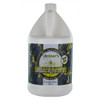That primary had two kits plus the gallon of wine base plus an extra 2.5 gallons of water, so about 16 or so gallons in total. The container is a 22 gallon Brute (food grade). I just checked the price at Label Peelers and the fruit base is now $31.77 (40% off sale). At Home Brew Ohio it is $54.99. Recall that I bought these kits in 2021 or 2022, at which time I bought the wine base. I just looked back at my order and I paid $44.99 for the wine base.How many gallons was your primary? A gallon of wine base is a bit pricey.

$44.99
1 × Vintners Best Fruit Wine Base - Blackberry
I must have been a lot richer then!





















































